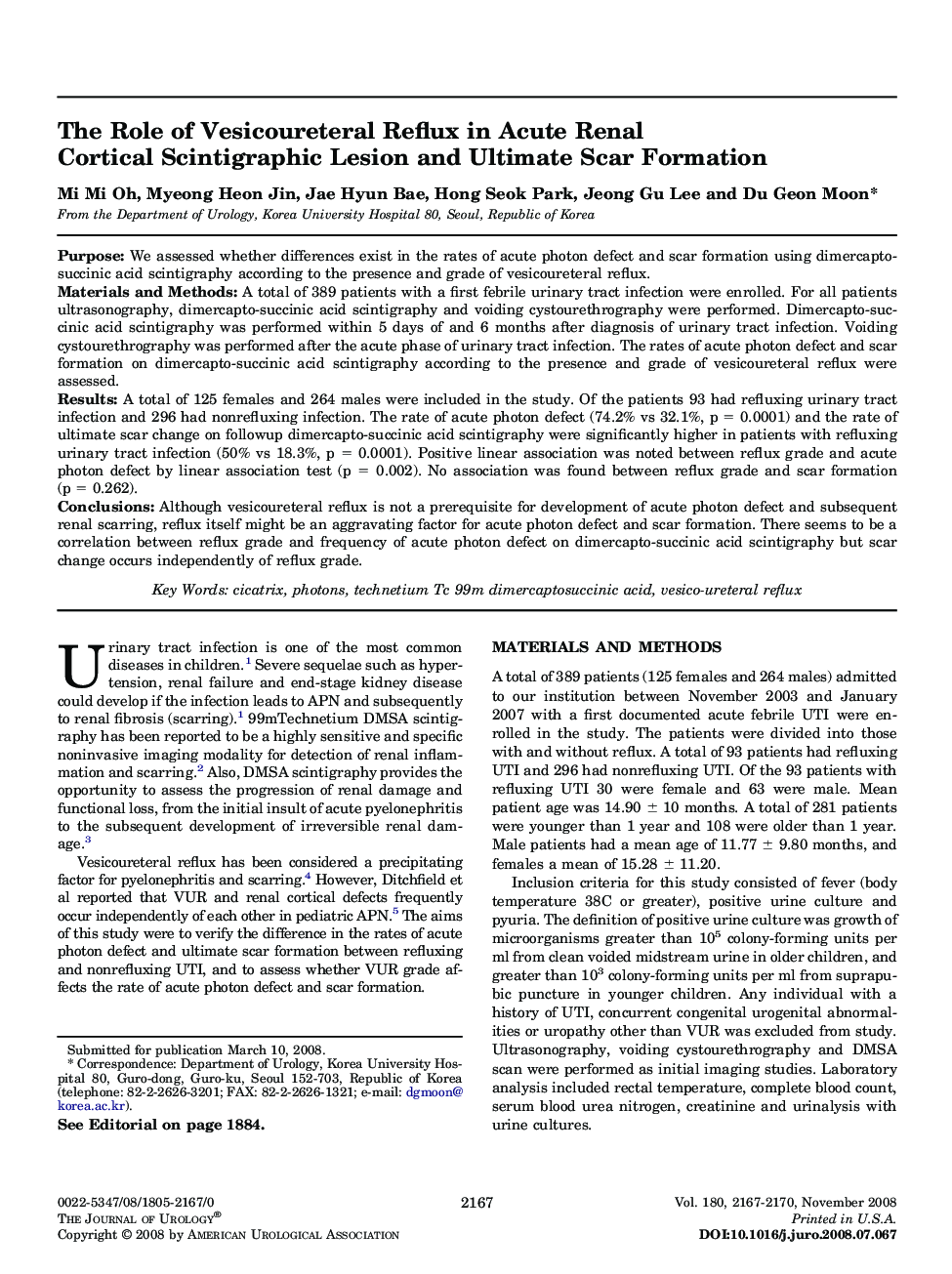| Article ID | Journal | Published Year | Pages | File Type |
|---|---|---|---|---|
| 3871097 | The Journal of Urology | 2008 | 4 Pages |
PurposeWe assessed whether differences exist in the rates of acute photon defect and scar formation using dimercapto-succinic acid scintigraphy according to the presence and grade of vesicoureteral reflux.Materials and MethodsA total of 389 patients with a first febrile urinary tract infection were enrolled. For all patients ultrasonography, dimercapto-succinic acid scintigraphy and voiding cystourethrography were performed. Dimercapto-succinic acid scintigraphy was performed within 5 days of and 6 months after diagnosis of urinary tract infection. Voiding cystourethrography was performed after the acute phase of urinary tract infection. The rates of acute photon defect and scar formation on dimercapto-succinic acid scintigraphy according to the presence and grade of vesicoureteral reflux were assessed.ResultsA total of 125 females and 264 males were included in the study. Of the patients 93 had refluxing urinary tract infection and 296 had nonrefluxing infection. The rate of acute photon defect (74.2% vs 32.1%, p = 0.0001) and the rate of ultimate scar change on followup dimercapto-succinic acid scintigraphy were significantly higher in patients with refluxing urinary tract infection (50% vs 18.3%, p = 0.0001). Positive linear association was noted between reflux grade and acute photon defect by linear association test (p = 0.002). No association was found between reflux grade and scar formation (p = 0.262).ConclusionsAlthough vesicoureteral reflux is not a prerequisite for development of acute photon defect and subsequent renal scarring, reflux itself might be an aggravating factor for acute photon defect and scar formation. There seems to be a correlation between reflux grade and frequency of acute photon defect on dimercapto-succinic acid scintigraphy but scar change occurs independently of reflux grade.
